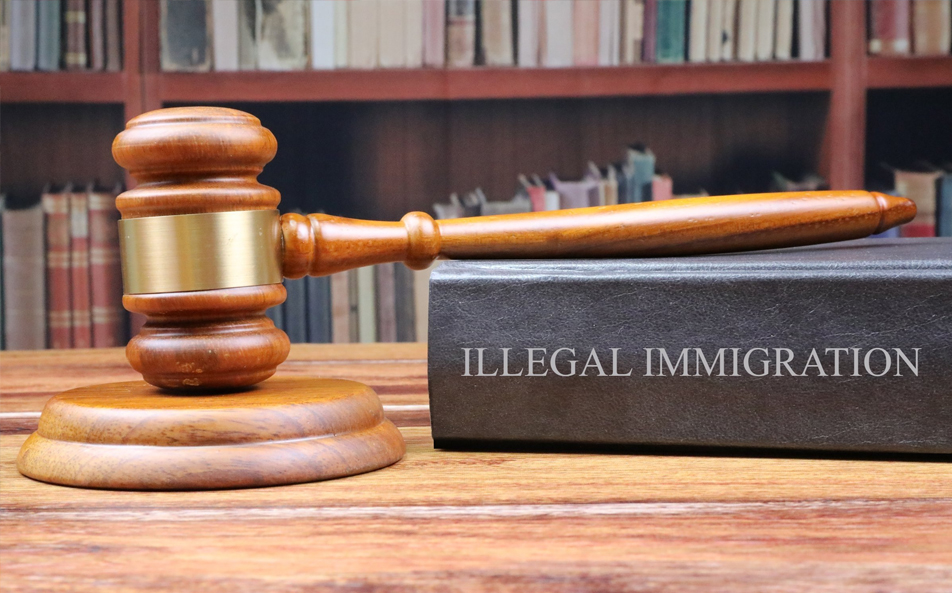
The United Indian

Illegal immigration is one of the most pressing and divisive issues facing countries worldwide. It refers to the act of individuals entering or staying in a country without the proper legal documentation or authorization. The debate surrounding illegal immigration is multi-dimensional, with political, economic, and social implications. Understanding the causes, impact, and potential solutions to this complex issue is key to finding effective ways to address it.
The Causes of Illegal Immigration
Illegal immigration occurs for a variety of reasons, often rooted in the search for better opportunities, safety, and a better quality of life. These reasons can be categorized into "push" and "pull" factors:
- Economic Opportunities
One of the primary reasons people migrate illegally is the pursuit of economic stability. In many developing countries, individuals face high levels of unemployment, poverty, and limited economic opportunities. The prospect of a better life in a developed nation, often accompanied by higher wages and improved job prospects, compels many to seek out opportunities abroad, even if it means entering a country illegally. - Escaping Conflict and Persecution
Political instability, war, and social unrest drive individuals to flee their home countries to seek refuge elsewhere. Refugees and asylum seekers often resort to illegal immigration because they lack access to legal asylum procedures or face long waiting periods for approval. This leads to desperate measures, such as crossing borders without authorization. - Family Reunification
Family reunification is another key reason behind illegal immigration. Many immigrants come to join family members who have already settled in a different country. The desire to be with loved ones often drives individuals to take unlawful routes when legal options seem inaccessible or delayed. - Lack of Legal Immigration Pathways
In many countries, legal immigration channels are limited, expensive, or overly complex. This lack of accessible pathways forces individuals to bypass legal processes and attempt to cross borders without proper documentation. Lengthy waiting times for visa approvals or high application fees also contribute to this issue.
The Impact of Illegal Immigration
Illegal immigration has far-reaching consequences that affect both the individuals involved and the countries they migrate to. These impacts can be economic, social, and political:
- Economic Strain on Resources
While illegal immigrants often contribute to the economy by working in low-wage sectors such as agriculture, construction, and hospitality, their presence can place significant strain on public resources. Many rely on healthcare, education, and welfare services, which can be expensive for governments to provide. Critics argue that illegal immigrants may not contribute enough in taxes to cover these costs, leading to an economic burden. - Security Concerns
Illegal immigration raises security issues, as individuals entering a country without proper checks may not undergo the same scrutiny as legal immigrants. This lack of vetting can lead to concerns about criminal activity, terrorism, and the potential for exploitation of vulnerable individuals. Ensuring the safety of citizens and national security often becomes a priority for governments trying to prevent unauthorized entry. - Labor Market Disruption
Illegal immigrants typically fill low-wage jobs that many native citizens may not want. While this helps alleviate labor shortages in certain sectors, it can also lead to competition with native workers. Some argue that the influx of cheap labor can suppress wages and reduce job opportunities for local workers, particularly in industries such as agriculture and construction. - Social and Cultural Tensions
The arrival of large numbers of immigrants, especially those who enter illegally, can create cultural and social tensions. These tensions arise from concerns about integration, language barriers, and differences in customs or values. In some cases, communities may feel overwhelmed by the demographic shifts, leading to a rise in nationalism and anti-immigrant sentiment.
Immigration Policy Changes in US By Donald Trump and Their Impact on Indian Immigrants in the US
The landscape of immigration in the United States has undergone significant shifts, particularly regarding illegal immigration and its enforcement recently after Donal Trump was elected as the 47th President. Recent actions targeting unauthorized immigrants, including those from India, have sparked discussions about the broader implications for both nations.
Solutions to Illegal Immigration
Addressing illegal immigration requires a multi-faceted approach that takes into account both the humanitarian aspects of immigration and the legitimate concerns of host countries. Some potential solutions include:
- Comprehensive Immigration Reform
One of the most effective ways to address illegal immigration is through comprehensive immigration reform. This reform could simplify and expand legal immigration pathways, making it easier for individuals to enter and stay in a country legally. By creating clear, accessible routes for immigrants, countries can reduce the incentive for people to resort to illegal methods of migration. - Stronger Border Security
While reforming immigration policies is crucial, stronger border security is also necessary to prevent unauthorized entry. This could involve enhancing physical barriers, increasing surveillance, and deploying technology such as drones and biometric systems to monitor and control border crossings. Improved screening and monitoring systems can help prevent illegal immigration while still allowing for legal migration. - Addressing Root Causes Abroad
To combat illegal immigration, it’s essential to address the root causes that drive people to migrate in the first place. Governments can invest in foreign aid and development projects that improve economic opportunities, education, and healthcare in countries with high levels of emigration. By promoting stability and prosperity abroad, fewer people would feel the need to flee their home countries. - Pathways to Citizenship for Long-Term Immigrants
For those who have been living in a country illegally for an extended period and have integrated into society, providing a pathway to citizenship could be a fair solution. This would allow individuals to come out of the shadows, contribute more to the economy, and avoid the negative consequences of living in fear of deportation. - International Cooperation
Illegal immigration is a global issue that requires international cooperation. Countries with shared borders or common immigration challenges can collaborate to develop solutions, such as joint border patrols, shared data, and policies to manage migration flows more effectively. Working together can ensure that the rights of migrants are protected while maintaining national security.
Conclusion
Illegal immigration is a complex issue with no one-size-fits-all solution. It involves a delicate balance between addressing the needs of migrants, ensuring national security, and maintaining economic stability. Governments, communities, and international organizations must work together to create policies that address the root causes of illegal immigration while ensuring fairness, security, and sustainability for all.
By reforming immigration systems, strengthening border security, and fostering international cooperation, countries can find a way to manage migration in a way that benefits everyone involved—immigrants and citizens alike.
Read more in Government Sector
May 28, 2025
TUI Staff
May 22, 2025
TUI Staff

Stay Tuned with The United Indian!
Our news blog is dedicated to sharing valuable and pertinent content for Indian citizens. Our blog news covering a wide range of categories including technology, environment, government & economy ensures that you stay informed about the topics that matter most. Follow The United Indian to never miss out on the latest trending news in India.
©The United Indian 2024









